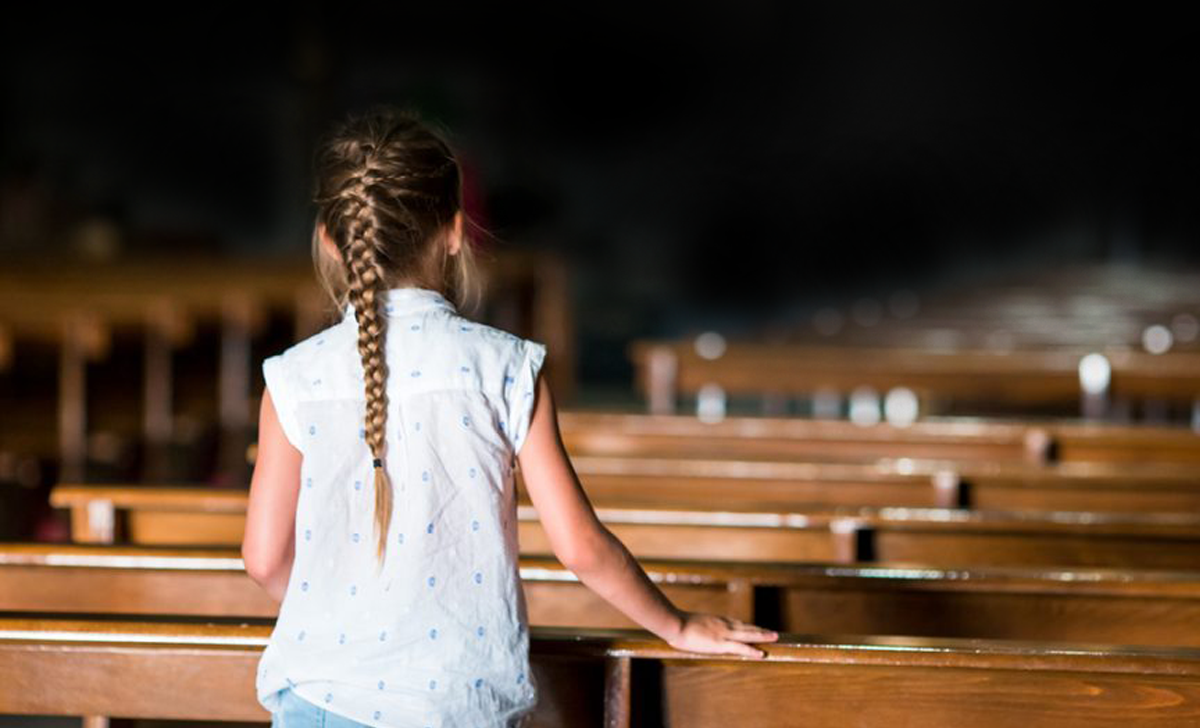
If you have been at CPC for any amount of time, you have likely noticed some things about our church that are pretty different from many other 21st century churches. If you have kids, I imagine one of the biggest things you’d note is that we do not have “children’s church” during our worship service. Even in the PCA, most churches offer some kind of alternative program for younger children during the worship service. As the mom of two young children myself, I fully understand why churches may offer a separate children’s option, and why many families choose to take advantage of that. There are certainly some great benefits to those kinds of programs (and I don’t want to speak badly about them or the churches that offer them); however, I do want to take a moment to explain why CPC has made the intentional decision to keep our children in the worship service with their families.
In his book Let the Children Worship, Jason Helopoulos explains why children should be included in the main worship service, and he addresses many of the challenges that come with that decision. He admits that no specific verse explicitly says, “include children in worship,” but there are plenty of Scripture references showing that children were included in worship services with their families and that children are part of the Covenant promise. In Joel 2.16, a command is given to “…gather the people. Consecrate the congregation; assemble the elders; gather the children, even nursing infants.” In Deuteronomy, we see instructions regarding feasts that include, “you and your son and your daughter” (16.11-15). In the New Testament (Acts), Peter preaches that “…the promise is for you and for your children and for all who are far off, everyone whom the Lord our God calls to himself.” (2.39). In Mark 10, Jesus himself commands the disciples to “let the children come to me.” Clearly, children were meant to be included in worship and are part of the Covenant promise.
One of my favorite quotes from Helopoulos’ book is his observation that when children worship alongside their parents, they are learning by example.
- “We recognize the benefits of steering our children clear of harmful things – disobedient friends, busy streets, uncovered electrical outlets, R-rated movies. Why wouldn’t we equally desire to steer our children towards beneficial things – the read and preached Word, corporate prayer, and the sacraments? Steering them away from the means of death is good, steering them towards the means of life is even better (p 41).”
It reminds me of a concept I adhered to during my time as a schoolteacher – making classroom rules about what not to do is less effective than telling, and showing, kids what to do. As parents, we can spend lots of time and energy helping our children avoid harmful things, but it is even more important to show them how they should be living. Furthermore, it’s not enough to simply tell them they should be going to church, reading their Bible, and living the Christian life. We have to actually model this in the way we live our own lives.
If you have kids, I am sure you have had the experience of seeing your child do something you never told them to do - they just picked it up from watching you. For better or worse, children learn from the examples of their parents. When your children sit next to you in church, they might not understand every word the pastor is saying. They probably don’t fully understand the hymns or the confessions we read in unison, and they may not even be able to read Scripture yet. This is why we offer plenty of other opportunities for them to engage in worship and Bible teaching at their age level. What they are seeing when they sit next to you is their parents worshiping God, reading Scripture, praying, confessing sins, accepting forgiveness, and participating in sacraments. They are learning by example!
We know that children will wiggle, make noise, or get bored and fidgety. And that is okay! We have resources available to hopefully help keep your children calm and engaged in the service. The children’s bulletin has been thoughtfully designed to walk children though the service and help them to participate in it. We have “calm kit” bags with quiet fidgets and weighted blankets that can be used in the Family Worship Room or taken back to your seat, because we know some kids need a little extra help being calm. For those who need even more help, there is a “sensory path” located in the hallway between the Fellowship Hall and the playground. Children can follow the marked steps and activities to get some wiggles out and calm their bodies and minds.
Another thing Helopoulos suggests to help children participate in the weekly worship service is getting prepared ahead of time. You can use the information in our Friday emails to read the Scripture passage with your children and talk about big, new words or what the passage is about. Teach them the Doxology and talk about what the words mean, so when we sing it together in worship they can participate. Helopoulos shares that when his children were young, he would give them a few key words to listen for in the sermon and tally up how many times those words were said – just something to keep them listening to what the pastor is saying and tuning in to bits they can understand.
I end with another quote from Let the Children Worship:
- “The covenant community’s very identity is wrapped up with worshipping its covenant-keeping God. And this community consists of believing adults andtheir children. Therefore, the church lives out its theology when it encourages and even expects its children to participate in this central event. Jesus said, ‘Let the children come to me’ (Mark 10.14). It would be odd indeed, if we sought to uphold that principle in every respect except the central act of the covenant people of God.”







